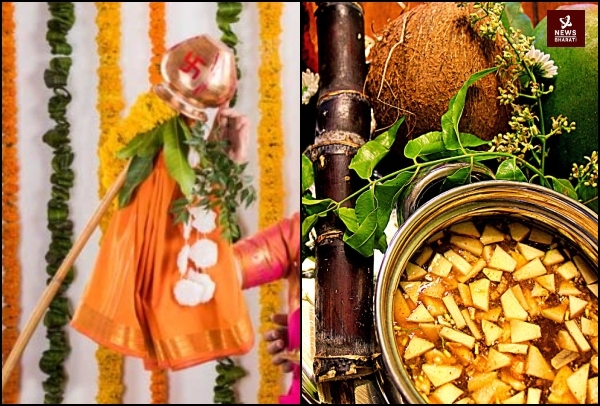Gudi Padwa, Ugadi, Yugadi & Chaitra Navratri: Here's how Hindu Nav Varsh is celebrated in THESE states of India
On April 9, several states of India celebrate Gudi Padwa and Ugadi, an auspicious day that marks the beginning of a new year for Hindus in Maharashtra, Karnataka, Goa, Telangana and Andhra Pradesh.
Total Views | 1164
This year on April 9, India celebrates Gudi Padwa and Ugadi, an auspicious day that marks the beginning of a new year for Hindus in Maharashtra, Karnataka, Goa, Telangana and Andhra Pradesh. It is celebrated on the first day of the Chaitra month to mark the beginning of the New Year according to the Hindu calendar and generally falls in late March or early April of the Gregorian calendar. The first day of the festival also marks the beginning of the nine-day Navratri festival.

Here is how these festivals are being celebrated in these states:
Gudi Padwa
Gudi Padwa or Samvatsar Padvo is the New Year festival celebrated in Maharashtra and Goa. A gudi usually consists of a bright silk scarf tied to the top of a bamboo stick. Boughs of neem, are also tied to the top along with flowers and garlands made of sugar candy on the top. The arrangement is capped with an upturned copper pot. Notably, Gudis signifies victory and is believed to ward off evil and invite prosperity. After placing it, people pray and consume the prasad made of neem leaves, cumin, and jaggery, etc. Lastly, a delicious spread featuring Puran Poli and Shrikhand is enjoyed with family and friends.
In Maharashtra, Gudi Padwa is celebrated with different traditions. E.g. In Lanja, situated in the Ratnagiri district, the Marathi New Year is greeted with fervour starting from the eve of Gudi Padwa. The occasion is marked by the chanting of names of Hindu gods, and rendition of traditional melodies, and goes on all night at Pachacha Mand, a gathering spot within the village. This festival, known locally as Ghorip, showcases captivating horse dances and elephant displays, which grab attention during this celebration.
Ugadi
Ugadi is the New Year festival celebrated by the people of Karnataka, Andhra Pradesh and Telangana. The word - Yugadi or Ugadi - is derived from the Sanskrit words yuga (age) and adi (beginning), which literally means 'The beginning of a new age'. The Kannadiga people use the term Yugadi while the Telugu people use the term Ugadi for this festival.
This festival also marks the beginning of the new year in the Hindu calendar. It is also celebrated in the same way as Gudi Padwa except Gudi is not placed in the house. There is also a tradition to eat neem jaggery on the occasion of Ugadi in Karnataka. This means that happiness and sorrows should be accepted as integral parts of life and consuming neem and jaggery have a lot of health benefits as well. People also draw colourful patterns on the floor called Muggulu and put mango leaf decorations on doors called torana.
There are many special dishes prepared for the Ugadi festival. In Karnataka, eatables like olige, vobattu, and mango pickles are made. In Andhra Pradesh and Telangana, eatables such as - pulihora, bobbatlu (Bhakshalu/ polelu/oligale), New Year Burelu, Pachadi, and raw mango preparations are made.
Pachadi, also known as Ugadi pacchadi, is a special chutney-like dish made on this auspicious day with tamarind paste, neem flowers, brown sugar or sweet jaggery, salt, and sometimes mango. The dish consists of all flavors of sweet, sour, tangy and bitter, a symbolic reminder of complex phases of life one should reasonably expect in the new year.
Chaitra Navratri
Chaitra Navratri is a nine-day Hindu festival that celebrates the victory of good over evil. It is also known as Vasant Navratri, as it falls in the spring season. It concludes on the ninth day with Ram Navami, commending the birth of Bhagwan Shri Rama. This year, Chaitra Navratri begins on April 9, 2024, and concludes on April 17, 2024.
The nine-day festival of Chaitra Navratri is dedicated to the worship of Maa Durga and her nine incarnations. It is a time for praying, meditating, fasting and enjoying with loved ones during the nine days. During this time, Maa Durga's devotees give up consuming non-vegetarian food, alcohol, and tobacco. They also consume food prepared without garlic and onion.
Bharati Web







